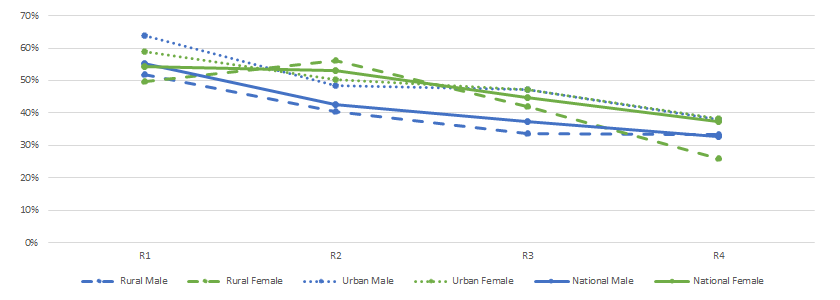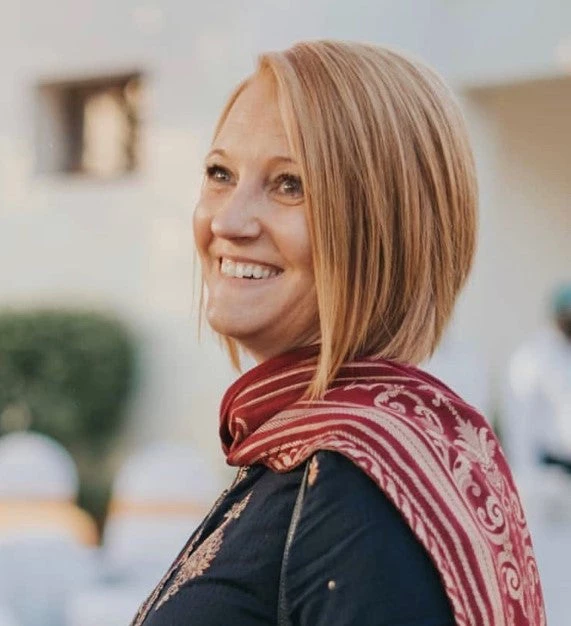The novel coronavirus disease (COVID-19) has devastating health and economic impacts globally and has disproportionately affected vulnerable groups. As highlighted in a blog published at the onset of the pandemic, the coronavirus is not gender-blind and pre-existing gender gaps may intensify during and after the pandemic due to worsening human capital, economic, and women’s agency outcomes.
What can high-frequency phone survey data tell us about the gendered effects of the pandemic in Ethiopia?
The short answer: A lot!
The COVID-19 pandemic created an urgent need for timely data and evidence to help monitor and mitigate the social and economic impacts of the crisis. The World Bank Ethiopia team, in collaboration with the government, designed and implemented two high-frequency phone surveys, one with formal firms in Addis Ababa and one with households. Combined, these surveys provide a wealth of evidence on the disproportionate effects of the pandemic on women in Ethiopia.
So far, Ethiopia has managed the crisis fairly well with a state of emergency in place between April and September 2020, prohibiting layoffs and offering some protection of jobs. Only 9% of respondents surveyed in the households lost their jobs after the outbreak of the pandemic, lower than in other countries across Africa. Employment rates have rebounded quickly and almost reached pre-pandemic levels by August 2020. Yet, women and women-owned firms face worse economic consequences compared to men, exacerbating existing gender gaps.
In some respects, women and men seem to be affected by the pandemic similarly. For example, male- and female-headed households have similar access to food staples, educational engagement of their children, and experiences of overall food insecurity during the months after the outbreak of COVID-19. However, women’s economic outcomes—such as employment and income—have consistently been far worse than those of their male counterparts.
Women experienced the largest drops in employment rates at the onset of the pandemic. Although worker layoffs were limited in scale, women employees were affected the most; 64% of laid off workers in April were women. Layoffs have tapered off in recent months, yet women are still disproportionally affected. Despite making up only 42% of the workforce, 57% of workers laid off in June were women.
Moreover, the proportion of women-headed households that experienced total household income losses, especially in rural areas, has been substantial and much higher than their male counterparts in the past eight months. In May, 25% of male-headed households reported diminished or a complete loss in income, compared to 44% of female-headed households (Figure 1). Different coping strategies used by men and women against these losses reveal likely challenges for long-term recovery. Women reported reducing food consumption to a larger extent compared to drawing on savings than their male counterparts (Figure 2).
Firm survey results show alarming signs of widening gender gaps in the business opportunities of women resulting from the pandemic. Women-owned firms are generally small compared to men-owned businesses; 55% of women-owned businesses had no employee in contrast to 44% of men-owned businesses. Moreover, only 4% of women-owned businesses generated sales turnover exceeding 1 million Ethiopian Birr in the last fiscal year (2011 EC) compared to 14.5% of men-owned businesses.
Although rates of firm closure have been similar—about 40% of women and men-owned businesses were shut in April—the pandemic has further widened the gender gap in business earnings with women-owned firms drastically underperforming compared to men-owned firms in terms of sales and profits. Sales revenue of women-owned businesses were about 18% of that of men-owned businesses before COVID-19, but that number dropped to 10% in June. Further, since the onset of the pandemic, women-owned firms were accumulating losses at an alarming rate between April 2020 and June 2020. This raises a major concern that the pre-existing gendered challenges facing women entrepreneurs—in access to capital and hired labor, for example—might worsen, further undermining the survival and performance of women-owned firms even after the pandemic.
Figure 1: Percentage reporting reduced or completely diminished total household income, R1-R4.

Figure 2: Coping strategies for loss in income, R4.

Women not only fare worse compared to men during the COVID-19 pandemic, their long-term recovery prospects also suffer. An inequal distribution of care work between men and women within the household already exists. Women now face additional barriers such as taking care of ill relatives and increased caretaking responsibilities during school closures, which will likely prevent them from transitioning back to work during the economic recovery phase. This not only hampers their income opportunities now but may leave lasting scars in their future earning potential with detrimental effects to their own and their families’ wellbeing.
What can be done to support women during the COVID-19 pandemic and subsequent recovery?
In the immediate aftermath of the pandemic, women should be at the forefront in the World Bank’s response to the negative economic effects. For example, women in the most vulnerable jobs, particularly in urban areas where economic effects of COVID-19 are most strongly felt, should qualify for expanded safety net mechanisms. Moreover, targeted measures to support self-employed women could support women to restart their businesses.
To soften the blow to business earnings, women-owned businesses deserve particular attention in designing economic recovery packages for firms. Our firm survey results show that although women-owned businesses are disproportionally affected by the COVID-19 pandemic in Ethiopia, less than 1% have received government support. Providing credit options that are easy to understand and qualify for can support women in sustaining their business operations.
It is vital to not only reverse the widening gender gap in economic outcomes resulting from the COVID-19 pandemic but to aim at closing the gender gap once and for all. The results of the high-frequency phone surveys provide a rich evidence base for policymakers and are an opportunity we cannot afford to miss in closing Ethiopia’s gender gaps.




Join the Conversation